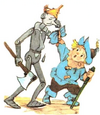It's in his books "
The Giza Death Star" and again in the new "
Giza Death Star Revisited".
I accordingly expanded my table chart of the
Minor Arcana and added some more ideas I had meanwhile:
View attachment 81311
As to mentioning Joseph Farrell, you beat me to it since I have recently been looking at his work again. I have yet to read his new book The Giza Death Star Revisited". He only made a cursory reference to the Minor Arcana of the Tarot Deck in The Giza Death Star. However, he did go into far more detail in his book The Giza Death Star Deployed. It was actually the esoteric researcher William Henry (who has an interesting take on the Grail and someone I hope to quote more from in future) who drew Farrell's attention to the parallels between standard occult [symbols] (or ceremonial magick talismans of power), the Tarot Deck and a standard modern pack of playing cards. Quoting Farrell:
Occult Symbol: Cauldron Sword Spear Stone/Crystal
Tarot: Cups Swords Wands Pentacles
Modern Cards: Hearts Spades Clubs Diamonds
A further parallel exists in the accoutrements of the practitioner of ceremonial magick:
Occult Symbol: Cauldron Sword Spear Stone/Crystal
Tarot: Cups Swords Wands Pentacles
Modern Cards: Hearts Spades Clubs Diamonds
Magick: Chalice Dagger Wand Crystal
Ralph Ellis in his Thoth: Architect of the Universe, points out a possible "paleophysical meaning" behind the minor trumps of the Tarot and the modern pack of playing cards, stripping away one layer of a possible physics origin for something a simple as a deck of playing cards:
Item: Number: Physics Analogy:
Number of cards 52 Number of weeks in the Terrestrial solar year
Number of cards per suit 13 Number of Lunar Months
Number of picture cards 12 Number of Terrestrial Months
Number of suits 4 Number of Seasons
Number of spots (pips) 364 Approximate number of days in the Earth's solar orbit
Interestingly enough, the only survivor of the Major Trumps from the Tarot deck in the modern playing cards deck is the Fool, or as is more commonly known, the "Joker". Giving it an arbitrary value of 1,234 would increase the number of "pips" or spots in the playing card deck to 365,234, a number reflecting the current calendrical system of counting the number of days in a year.
But one may go further, much further, in uncovering possibly encoded deep layers of physical meanings latent in the now garbled traditions of esoteric practice. For example, in the typical "Tarot reading" the reader is supposed to clear his mind, concentrate on the question of being asked of the cards, and then begin the "shuffle". What basis in physics might these seemingly simple acts have? Since quantum mechanics and more recent scientific investigations into the relationship of consciousness and physical reality have posited some sort of connection between Observer and observed effect, the following relationships suggest themselves:
Tarot Reading: Possible Underlying Physics:
Clearing the mind and focus on the Question Posited links between the mind the structured potential of the
Zero Point Energy
The Deck itself "Infinite" information potential of the field
The Shuffle Analog random number generator
The Spread Union of the previous steps, i.e., of form and matter: the structured potential of information in the field
Extending this analogical analysis even further, recontextualising the four standard talismans of power reveals more tantalising possibilities when viewed in the contexts of electromagnetics and topology:
Occult Symbol: Cauldron Sword Spear Stone/Crystal
Tarot: Cups Swords Wands Pentacles
Modern Cards: Hearts Spades Clubs Diamonds
Magick: Chalice Dagger Wand Crystal
Electromagnetism: Capacitor Waveguide Antenna Crystal/Lattice
Topology: Basins of Bifurcation Maps Matrix/metric
Attraction
As you can see from the above, Farrell believes there is an occulted, hidden science disguised behind the Minor Arcana of the Tarot Deck, which has been carried over into the modern pack of playing cards. It is interesting therefore that playing cards, especially the Queen of Hearts, should play a prominent part in Lewis Carroll's tale Alice in Wonderland.
Under the above analytical table, you will note that the Cauldron (as in the Dagda's or Cerridwen's cauldron) is linked with Cups, Hearts, a Chalice, a Capacitor and Basins of Attraction. In my view, the Cauldron is the Ark of the Covenant, in which was stored the Grail but also a lethal power cell (according to the C's) used as a weapon by the Israelites, that may have operated by storing and then discharging energy as a powerful electrical capacitor. Moreover, in my view, the Grail is symbolised as a stone or crystal, which can be linked to Pentacles, Diamonds, a crystal lattice and a matrix, as found within the pure crystal skull artefact held by the Knight Templar, which they called Baphomet. In Moyal's revised table, the Swiss-German Tarot deck substitutes Roses in place of Hearts and Cups or a Chalice (the Christian symbol for the Grail). This is intriguing since the rose may well be a hidden symbol for the Grail, as in the rosy cross (croix rouge) of the Rosicrucians and the Rose of Sharon of Jewish scripture.



